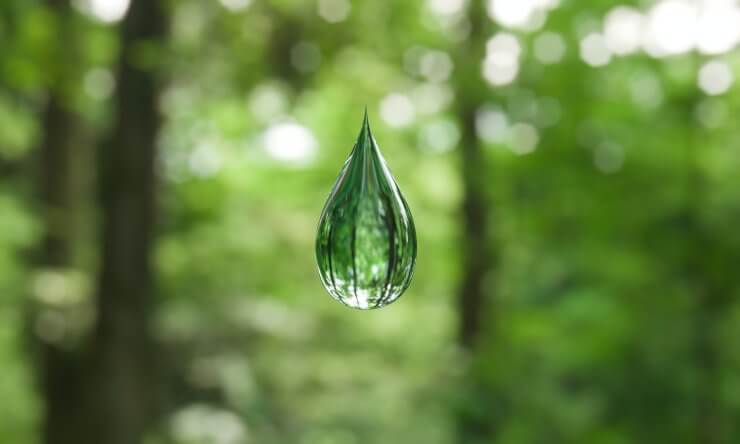
I remember watching a film strip (yes, I’m old) in grade school that showed me how people wasted up to four gallons of water if they left the faucet on while brushing their teeth. That same filmstrip highlighted the environmental benefits of the three R’s: Reduce, Reuse, and Recycle. Since then, my environmental sustainability efforts happen in small steps, especially in the garden. From implementing a compost system to switching from a gas to an electric lawnmower and other garden tools. I’ve even used recycled materials to build a trellis or two. What’s next? How about learning how to recycle rainwater for the vegetable garden?
Human beings have been recycling rainwater since 2000 B.C. Surprisingly the essential process hasn’t changed all that much. The idea is simple. Collect and store rainwater in a container for later garden watering and irrigation use. The most popular method when learning how to recycle rainwater is utilizing a rain barrel. Rain barrels can be made from wooden, metal, or plastic, and typically have a hose or spigot at the bottom from which to access the recycled water. Here are ten tips and guidelines for recycling rainwater for your vegetable garden.
Discover 7 top tips for growing, harvesting, and enjoying tomatoes from your home garden—when you access the FREE guide The Best Way to Grow Tomatoes, right now!
1. Collected rainwater is not suitable for drinking water
This may go without saying, but I’m still listing it at #1. Water collected in a rain barrel is not suitable for human consumption. This has to do with contaminants the water has picked up on its way from your gutters or roof to your barrel. There are ways to treat water to make it safe for vegetables (more on that later), but you should never drink directly from your rain barrel.
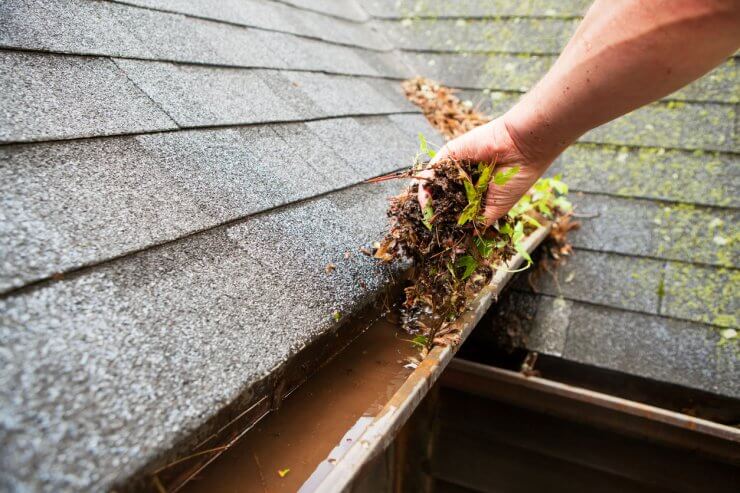
2. Keep your gutters clear of debris
To recycle rainwater, you need to first think about where it’s coming from. For most folks, it means connecting a rain barrel to an existing gutter downspout. What it also means is that you need to stay on top of your gutter maintenance. If your gutters are dirty and clogged with debris, your recycled rainwater will carry that debris into the rain barrel.
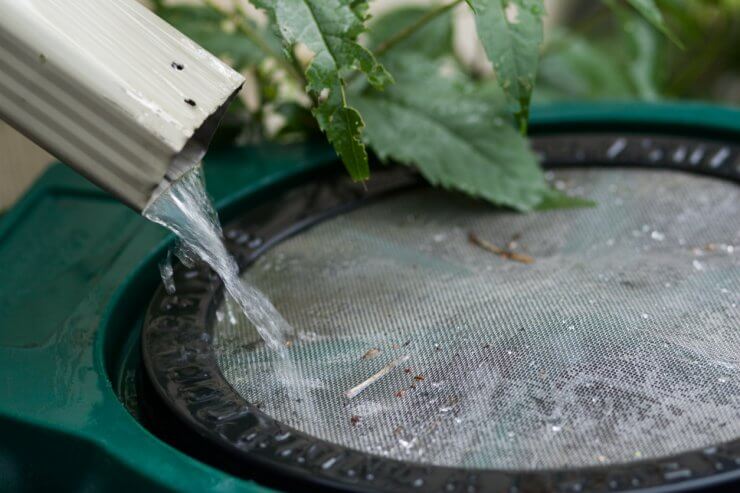
3. Buy or make your own rain barrel, and make sure it has a screen
If you want to recycle rainwater using a rain barrel, you’ll have the option to make one out of a regular barrel/waste bin or buy a specially designed rain barrel system. In either case, you’ll want to make sure that there is some kind of screen at the top of your barrel to prevent large debris from entering the reservoir. With DIY models, a mosquito screen is a great choice. For both store-bought and DIY models, you’ll need to check the screen periodically to make sure it’s not clogged.
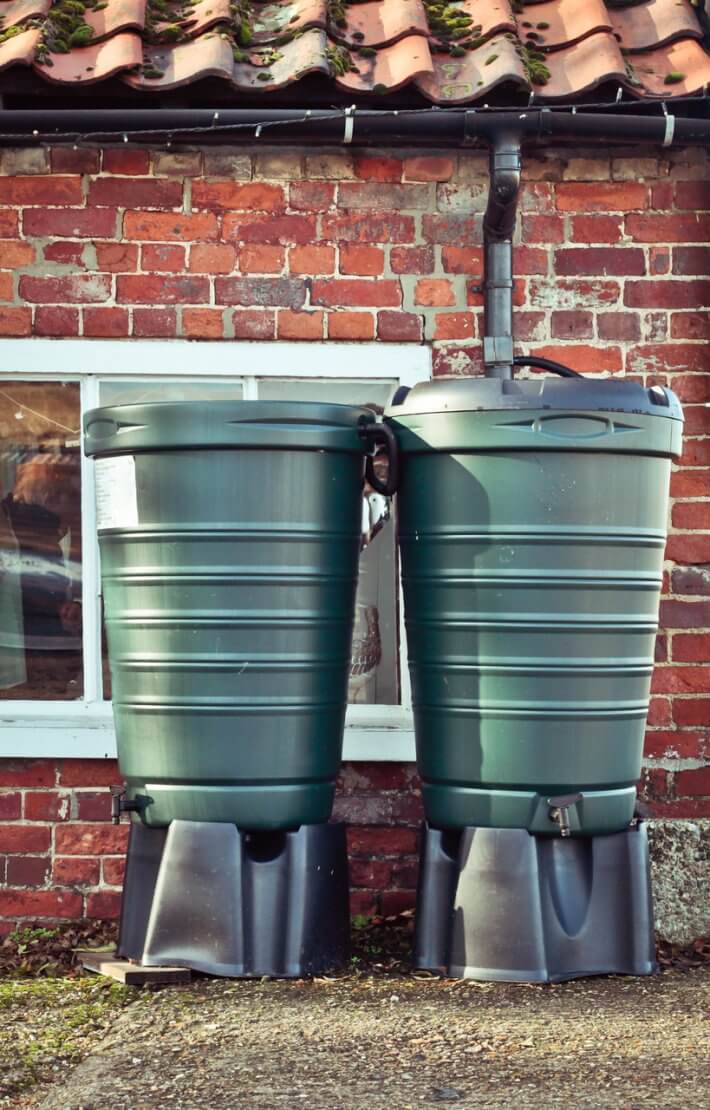
4. Use a rain barrel diverter
Purchased separately, a rainwater diverter is a good idea when figuring out how to recycle rainwater. It’s an attachment that you connect to your rain gutter that diverts water into your rain barrel. Most diverters will then revert back to the downspout once your barrel is full, preventing an overflow near your house’s foundation. There are even some more expensive diverter models that offer a “first flush” feature, that flushes the first wave of rainwater away from the rain barrel since that has a higher concentration of contaminants.
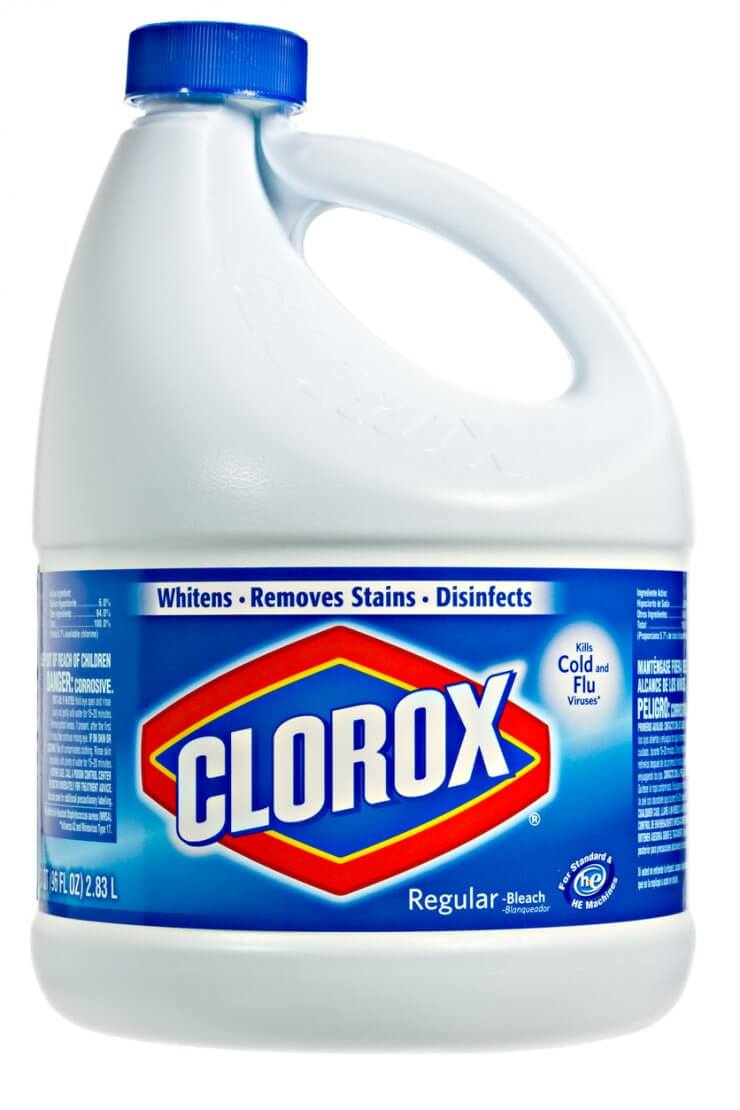
5. Treat stored rainwater with bleach
Before using recycled rainwater in your garden, treat it with a small amount of bleach. The recommended ratio is eight drops of bleach per gallon or one ounce per 55 gallons. The diluted bleach will kill bacteria and other contaminants and it’s best to wait 24 hours after treating the water before using it in your vegetable garden.
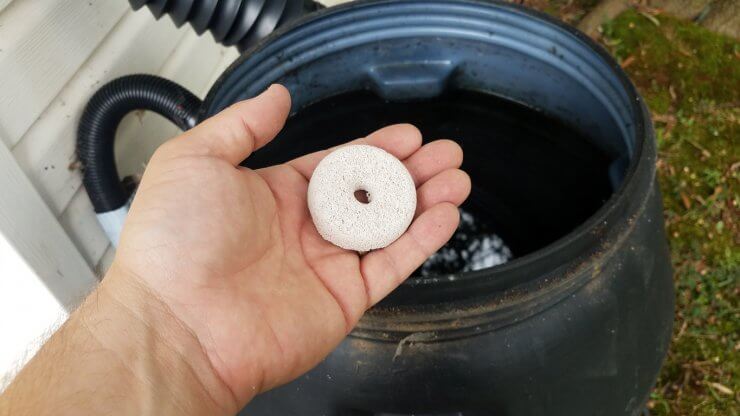
6. Consider a Mosquito Dunk (tablet)
If you’re worried about standing water and mosquitos, consider adding Mosquito Dunks® to your rain barrel. These tablets release a good bacteria (Bacillus thuringiensis israelensis) that inhibit mosquito larvae from developing. The bacteria is non-toxic for plants and animals. According to Summit, the manufacturer of Mosquito Dunks®, “The EPA has registered Mosquito Dunks® for use in animal watering troughs and fish habitats. More recently the Dunks® have been approved for use Organic Production and Gardening, under the National Organic Program guidelines.”
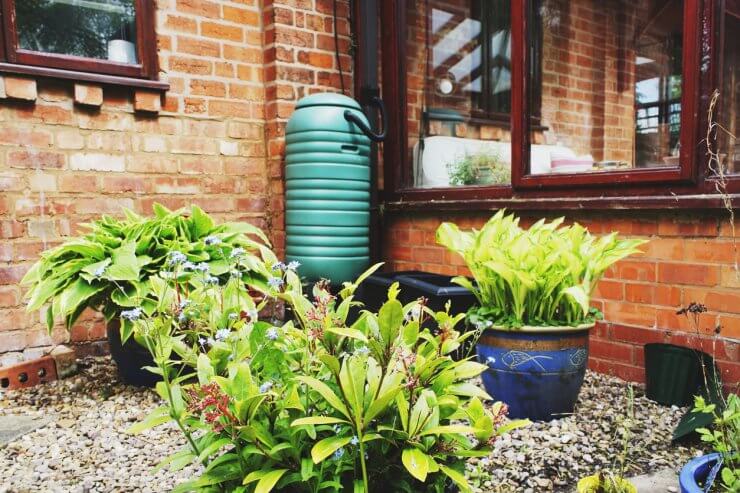
7. Avoid see-through containers (algae)
Whatever type of rain barrel you choose, make sure it’s opaque and not see-through. A barrel that lets in any light will be a breeding ground for algae which can contaminate your recycled water.
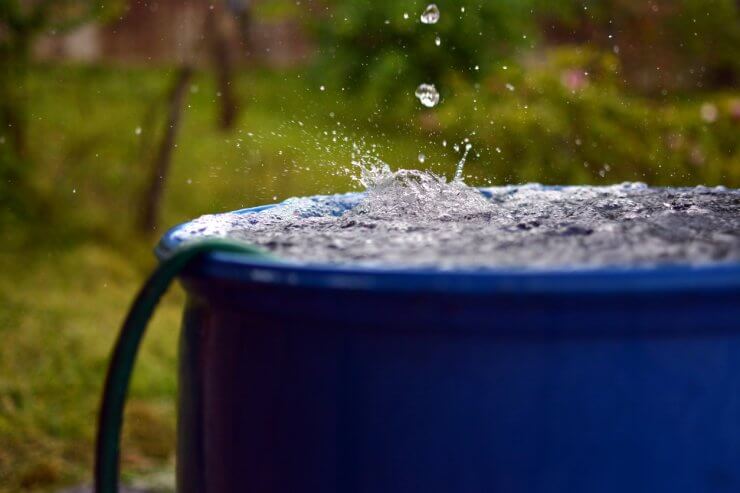
8. Maintain your rain barrel
Wash your rain barrel at least once per year, using bleach or vinegar cleaning solution. This will help get rid of natural sediment that has settled to the bottom of the barrel as well as prevent odors from building up over time.
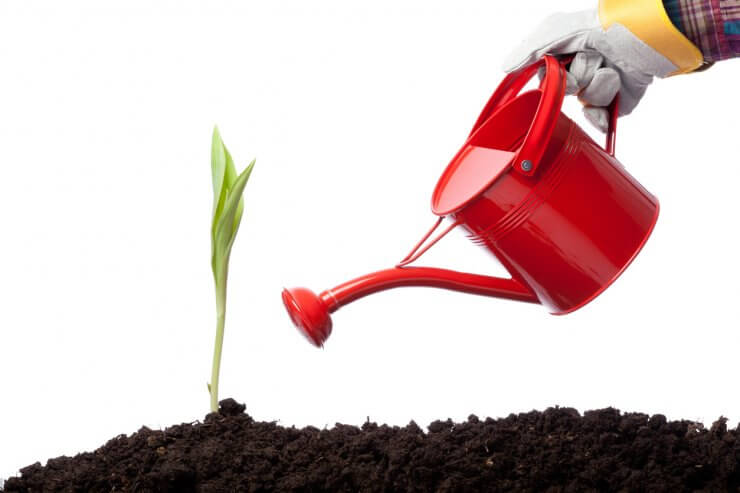
9. Water the soil (not the plant)
When using recycled rainwater in your vegetable garden, try to aim your watering can or soaker hose into the soil surrounding your vegetables and not onto the vegetables and leaves themselves. This will help prevent contamination in the event that your rainwater does have any surface bacteria in it.
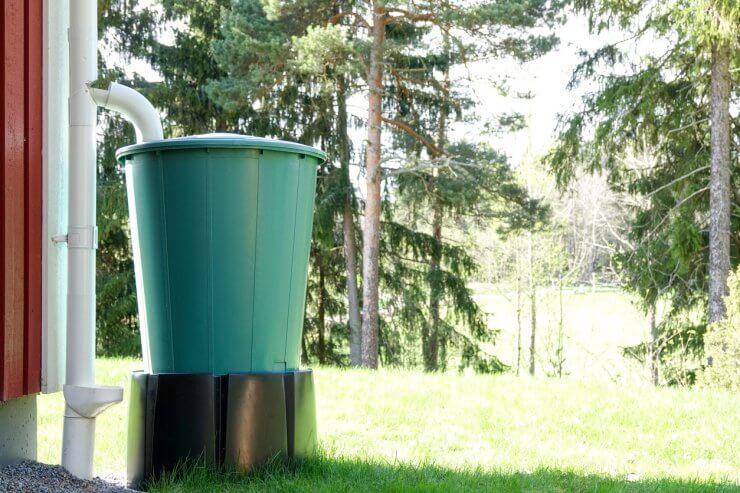
10. Elevate your barrel
Using the same principles of a water tower, elevating your rain barrel off the ground by a foot or two can provide a bit of water pressure that can be useful for soaker hoses and other drip irrigation systems.
Have you ever used a rain barrel or are you thinking about it? What method did you or will you use? Let me know in the comments.
Discover 7 top tips for growing, harvesting, and enjoying tomatoes from your home garden—when you access the FREE guide The Best Way to Grow Tomatoes, right now!





I like the rain barrel pictured with the large screen top. Who is the manufacturer?
Here is the description for the rain barrel with the large screen: FCMP Outdoor RC4000 Raincatcher 50 Gallon Rain Catcher Barrel, Green
I have used the collection of rain water for years for my garden. I have found that the commercial rainbarrels have become costly so have gone to using garbage cans with lids to keep cleaner and mosquito control. I still do use one commercial type for collection then divert to the garbage cans between rain events. I have for each season been able to store around 400+ gallons safely. very important here where most of the year we recieve no significant rainfall. ( Oakland,California)
I am worried about the leaching from plastic rain barrels into my water source for vegetables and flowers for pollinators. Are there any “food grade” barrels available on the market? I am having a devil of a time finding a safe option. TY
Have you seen these ones on Amazon? They’re made by a company who appears to recycle food-grade barrels into rain barrels – https://amzn.to/432kLPU
Please reconsider the information here about mosquito dunks. The back of the package clearly states a Hazardous to Humans warning. If this is used in rain barrels with water intended to be used on gardens, that hazard applies. Anything your food “eats,” animal or plant, is transmitted to the humans that eat them. Please do not advise the use of mosquito dunks in rain barrels or ponds intended for use on food gardens. Thank you.
Hi Annamary, Mosquito Dunks have verified that they are safe to use in rain barrels, it uses Bacillus thuringiensis israelensis which is safe to use for food crops and around children and animals. ” The EPA has registered Mosquito Dunks® for use in animal watering troughs and fish habitats. More recently the Dunks® have been approved for use Organic Production and Gardening, under the National Organic Program guidelines”. Hope that clears it up!